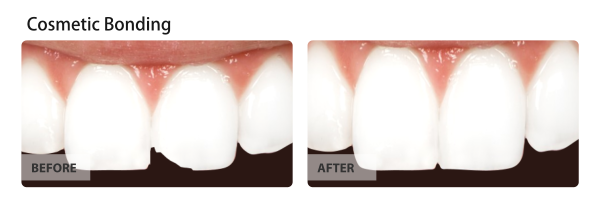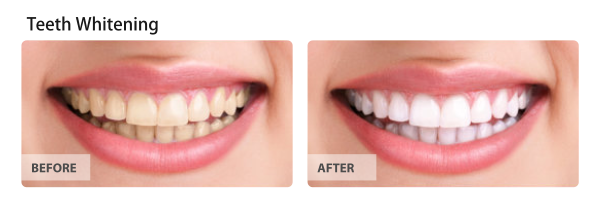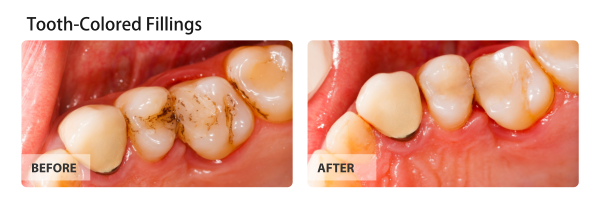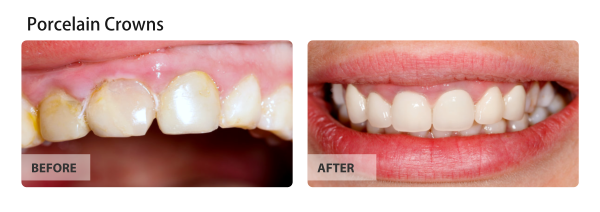Getting Braces in Battle Creek
Dental braces have come a long way since they were invented in the 1800’s. Today, Americans and residents of Battle Creek are privy to a bevy of tooth-straightening options, each of which offers different benefits. Currently, the most popular types of braces used in Battle Creek include:
- Metal Braces – These are traditional braces most often seen on children and teenagers. Metal braces are the most affordable and use a system of brackets and wires to move the teeth over time.
- Invisalign – This modern orthodontic treatment is highly popular among adults who want to straighten their smiles discreetly. Invisalign orthodontics is a system of customized plastic trays that are worn day and night, with the exception of when a patient is eating, brushing and flossing. The invisible trays are switched out every couple of weeks until a desirable result is achieved.
- Lingual Braces – These metal braces attach to the backs of the teeth and are not visible to other people.
- Ceramic Braces – These braces work like traditional metal braces, except that the brackets bonded to the teeth are made of ceramic. This helps prevent staining, and they can also be color-matched to blend with the teeth.

Did you know…that you do not have to have crooked teeth to benefit from braces? Even patients with a little bit of crowding can benefit from orthodontic treatment. When the teeth are properly aligned, patients can better clean between the teeth, preventing decay and gum disease. Furthermore, teeth that are optimally aligned can help remedy malocclusion complications, such as headaches. |
Frequently Asked Questions
Do I need braces?
Only you and your dentist can determine whether braces are right for you. However, chances are you could benefit from treatment if your teeth are crooked, overlapping or protruding. Schedule an appointment with your [city] dentist or orthodontist for more information.
What should I expect while I have braces?
You will have certain dietary restrictions with most types of braces except Invisalign. Some foods, such as hard, sticky and chewy foods, can have an adverse effect on braces and damage the brackets and wires. You will also need to make frequent office visits to have wires tightened. If you have Invisalign, there are no dietary restrictions, as the orthodontic trays are fully removable when eating. You’ll also be able to switch to a new Invisalign tray every few weeks without visiting your dentist.
What happens when my orthodontic treatment is complete?
When you have completed your treatment, you will have your braces removed and be given a retainer. The retainer must be worn at all times initially to help preserve the new placement of your teeth. As time progresses, you may be able to begin wearing your retainer only at night.
[city] Post-op Instructions
The process of placing an orthodontic appliance is non-surgical, but it does require special post-procedural instructions to minimize patient discomfort and protect each patient’s appliance from damage. Failure to follow these instructions can prolong treatment, make treatment more costly, or even result in a dental or orthodontic emergency.
Did you know…that it is normal for orthodontic patients to experience some pain or discomfort following orthodontic treatment? Usually soreness occurs in the muscles and teeth and can last for one to two days. During this time, many patients find difficulty eating – especially foods that are hard or crunchy. To relieve discomfort, it is recommended that [city] patients temporarily consume a diet of soft foods or otherwise cut harder foods, like apples, into very small bites. |
Frequently Asked Questions
Do I need to follow my orthodontist’s post-op instructions?
Yes. Every directive is given for a reason, so it is imperative that you follow doctor’s recommendations between orthodontic appointments. Also, never leave your orthodontist’s office without the supplies necessary to facilitate post-op care. This may include acquiring orthodontic wax to protect your cheeks and gums from poking wires, or obtaining enough elastic bands and cleaning aids to last until your next orthodontic visit.
What types of post-op instructions will I need to follow?
Instructions vary from patient to patient and according to treatment. But if you have a fixed orthodontic appliance, you will probably have to follow special dietary guidelines to prevent damage to your braces or other orthodontic appliance. Most dietary restrictions include avoiding foods that are very hard or sticky, such as ice and chewy candies. If you do not have a fixed orthodontic appliance, your post-op instructions will include information about storing and cleansing your device.
Will my [city] post-op instructions apply to every visit?
Possibly. There may be some visits where you are told to wear elastics or activate your expander until your next visit. It is important to never leave your [city] orthodontist’s office until you have a thorough understanding of your responsibilities at home. Continue to use proper brushing and flossing techniques, visit your dentist for periodic cleanings and examinations, and contact your orthodontist’s office if you have any post-op questions.
Preventive Care
The field of orthodontics spans beyond corrective treatments. It also includes preventive care, which is used to prevent the development of a bad bite or crooked and overcrowded teeth. In fact, some children who undergo preventive treatments can avoid the need for far more invasive treatments later in life. By the time [city] preventive orthodontic treatments are complete, children have an adequate amount of jaw space for permanent teeth to erupt.
Did you know?It is important that your child undergo an orthodontic screening no later than age 7. Preventive care is only effective when used early – usually while the majority of primary teeth are still intact. Some of the most common preventive orthodontic treatments in [city] include:
|
Frequently Asked Questions
Does my child need preventive orthodontic treatment in [city]?
Your child may need preventive care if he or she has malocclusion, inadequate jaw space, has teeth erupting in the wrong spaces, or has missing primary teeth lost due to decay or trauma. If you suspect that your child could need preventive orthodontic, schedule a consultation immediately.
What should I expect during preventive orthodontic treatment?
Preventive treatment varies from child to child. Some types of preventive appliances are fixed in your child’s mouth, and require multiple visits to ensure a perfect fit. If your child’s appliance is removable, you will be given instructions for how and when your child should wear the device. You can also expect to make occasional orthodontic visits for the duration of your child’s preventive treatment to measure progress and make adjustments as needed.
Will I need to follow any special instructions while my child is undergoing preventive treatment?
Yes. In addition to ensuring your child’s appliance is being worn correctly, you’ll need to also prevent your child from consuming foods that could damage the appliance while being worn. If your child’s appliance is removable, you’ll need to clean it regularly and store it according to your orthodontist’s instructions.
Smile Gallery






Battle Creek Teeth Whitening
Teeth whitening procedures are used to brighten the appearance of a patient’s smile – sometimes by as many as 5 to 10 shades in a single session. According to the American Dental Association, teeth whitening procedures have become some of the most popular esthetic dental treatments among patients throughout the country, including Battle Creek. Professional teeth whitening services can be performed in an office setting or prescribed for take-home use by a patient. In comparison to over-the-counter teeth whitening treatments, professional whitening uses stronger whitening agents that deliver faster and more effective results.
Before and After

Did you know…that the teeth naturally darken as we age? Furthermore, certain foods, beverages, medications and habits can contribute to a darker, yellowed, or stained smile. However, it is possible to erase years of stains in a single professional whitening session and sustain those results for many years with proper maintenance. According to the American Academy of Cosmetic Dentistry, professional whitening is best maintained by a combination of good oral care and take-home whitening treatments as recommended by your dentist. |
Frequently Asked Questions
Am I a Candidate for Teeth Whitening?
You may be a candidate for professional teeth whitening if you are experiencing discoloration, but otherwise have healthy teeth and healthy gums. Schedule a consultation with a Battle Creek dentist to find out if tooth whitening could be right for you. Some patients, such as those who are pregnant or sensitive to whitening agents, may not be candidates for professional whitening.
What Should I Expect When I Get My Teeth Whitened?
Battle Creek teeth whitening consists of a thorough cleaning and polishing of the teeth, with all debris carefully removed. Your dentist will then protect your gums before applying a whitening agent to the surface of your teeth. The product will be activated and left on the teeth for several minutes before being washed off with water. Your results will vary according to the natural shade of your teeth and degree of discoloration, but it is normal for patients to experience a lightening of several shades in a single visit.
What Type of Post-Treatment Care is Required After Having My Teeth Whitened?
It is normal to experience some tooth sensitivity following a professional whitening treatment. You may be instructed to avoid consuming highly pigmented beverages for at least 24 hours to prevent the teeth from becoming stained again. Examples include tea, coffee and wine. Depending on your results and long-term teeth whitening goals, you may also be sent home from your procedure with an at-home whitening kit for later use.
Battle Creek Veneers and Laminates
Dental veneers – also known as laminates – are used to cosmetically enhance the appearance of one or more teeth. Veneers are very thin, porcelain or resin shells that are customized for a desirable color and shape. They are bonded to the surface of the teeth to reshape broken, misshapen or irregular teeth, as well as provide a solution for discolored teeth that do not respond to traditional whitening treatments. Battle Creek patients with veneers typically achieve a natural tooth appearance that is well-tolerated by the gums and also resistant to future stains.

Did you know…that dental veneers are a conservative way of completely making over your smile? In fact, veneers are a go-to cosmetic procedure that has become popular with celebrities who want a brighter and more symmetrical smile. Miley Cyrus, Hilary Duff and Ben Affleck are just some of Hollywood’s elite who have seen a cosmetic dentist for laminates. Fortunately, affordability and accessibility make it easy for anyone to get dental veneers – including Battle Creek patients. |
Frequently Asked Questions
Am I a candidate for dental veneers or laminates?
Dental veneers may be right for you if you are looking for an alternative to crowns and caps. Veneers can help you if you have gaps between your teeth or teeth that are broken, chipped, irregularly shaped or misaligned. To find out more about whether dental veneers are right for you, contact a cosmetic dentist in Battle Creek to schedule a consultation.
What should I expect when I get my dental veneers?
Before dental veneers can be placed on the teeth, the surface of the teeth must be prepared for bonding. After administering a local anesthetic, your dentist will buff away approximately half a millimeter from the surface of the teeth. You’ll then bite into a mold that will be used to form your veneers in a dental lab. When the veneers are ready, you’ll be asked to return to have them fitted, bonded and adjusted for shape and color.
Will I need to follow any post-treatment care instructions?
There is no special care required for dental veneers, and normal brushing and flossing can be resumed immediately. Because veneers are usually placed over the course of two appointments, it is normal to experience some sensitivity between the first and second visit when the teeth have been reduced in preparation for bonding.
Battle Creek TMJ Treatment
TMJ refers to the temporomandibular joint, which is the bone structure, muscles and connective tissues that surround the jaw and control chewing. When patients experience disorders of this joint, they are said to have a temporomandibular joint disorder, or TMD. Symptoms of TMD include pain and tenderness near the jaw, as well as popping or clicking in the joint when speaking or chewing. There are many ways of treating TMJ disorders in Battle Creek, ranging from non-invasive therapy and bite splints to injections or surgery. Left untreated, however, TMJ disorders can lead to headaches, muscle pain, malocclusion and tooth damage from grinding or clenching.

Did you know…that TMD alone is not a disorder, but instead a collection of disorders that affect the temporomandibular joint? It is the second most common pain-causing musculoskeletal condition in the U.S. according to the U.S. National Institute of Dental and Craniofacial Research, as many as 12 percent of Americans may suffer from some type of TMD, with women twice as likely to be affected than men. But despite the prevalence and wide availability of treatment, only one out every three people with TMD fails to seek treatment. |
Frequently Asked Questions
How do I know if Battle Creek TMJ treatment is right for me?
You will first need to be formally examined and diagnosed with TMJ disorder. You Battle Creek dentist will evaluate the extent of the condition and determine what course of treatment is best for you. Usually, the initial approach involves conservative treatments, such as self-care, physical therapy and bite guards. Medications may also be used to relax the jaw or relieve pain. Patients who do not respond to conservative treatments may be considered for surgery or joint injections.
What should I expect if I undergo treatment for TMJ
Battle Creek TMJ treatment varies from patient to patient, so your experience may be very different than someone else’s. You’ll probably be asked to adopt certain lifestyle changes to help facilitate rehabilitation in your jaw. For example, you may be asked to avoid sudden jaw movements, such as yelling or yawning. You may also need to begin sleeping on your back and take steps to reduce your stress levels.
Will I need to follow any special post-care instructions while being treated for TMJ?
Your post-treatment care instructions will vary according to the type of treatment you receive. If you undergo an aggressive treatment, such as surgery, you may be temporarily subject to an all-liquid diet. You’ll also need to apply ice to the face to minimize swelling and also keep the surgical site clean and dry.
Battle Creek Dental Sealants
Dental sealants are very thing coatings used to fill in deep grooves and pits in teeth that can harbor bacteria. Sealants are applied to healthy chewing surfaces of the teeth to prevent decay and cavities – especially among children. According to the Centers for Disease Control, tooth decay affects more than half of children ages 6 – 8, and even more older children and teens. By applying sealants, families can prevent decay and the save on the costs associated with filling cavities. If you plan to get dental sealants in Battle Creek, the CDC recommends doing so shortly after the molars have erupted from the gums – usually beginning around age 6.

Did you know…
|
Frequently Asked Questions
How do I know if Battle Creek dental sealants are right for my child?
Sealants may be right for your child if he or she has molar teeth that are healthy and free of decay. Schedule a dental consultation for a complete examination to determine if dental sealants could be a preventative health solution for your children.
What should I expect when my child gets dental sealants?
Your child will not experience any pain when sealants are placed. There is no drilling, and the entire tooth is left intact for the procedure. The tooth will be thoroughly cleaned and treated with a special gel before the sealant is painted on and cured. Although your child may at first feel the sealants on his or her teeth, the sealants are very thin and easy to adapt to.
Are there any special care instructions to follow after the sealants are placed?
Normal eating habits can be resumed after dental sealants are applied, although the sealants should be checked at every dental appointment for deterioration. Sealants that are damaged or missing can be replaced.
Battle Creek Root Canals
Root canals are valuable dental procedures used to treat and preserve teeth with badly infected roots. The pulp is the live portion of the tooth that extends into the root and contains nerve endings and tissues. When it becomes infected, patients can experience pain, swelling and even total tooth loss unless treated. Root canals remove the damaged parts of the tooth and infected root. In some cases, an antibiotic is prescribed to help prevent further infection within the tooth. The organic portion of the tooth that remains may be restored using a cap or crown that provides a natural appearance and normal tooth function.

Many patients associate root canals with pain and discomfort.But local anesthetics and advancements in modern dentistry have made root canals highly tolerable procedures that are often no less comfortable than getting a standard filling. Upon completion, a restored tooth that has undergone a root canal will blend in with surrounding teeth – virtually undetectable to the average eye. More than 9 out of 10 Battle Creek root canal procedures are successful, and most treatments last many years or even a lifetime. |
Frequently Asked Questions
Am I a candidate for a Battle Creek root canal?
You could be a candidate for a root canal if decay or damage has allowed bacteria to infect the pulp inside your tooth. A root canal could also be the right treatment for you if you prefer to preserve as much of your natural tooth as possible instead of extracting both the healthy and diseased portions of your tooth. For more information about Battle Creek root canals and whether they are right for you, schedule a dental exam and consultation at your earliest convenience.
What should I expect during my root canal treatment?
If you decide to undergo a root canal, the first step in your procedure will involve a local anesthetic. Once your tooth root is numb, the diseased portion of your tooth pulp will be removed and potentially treated for bacterial infection. The tooth will then be sealed and filled before being restored with a crown.
What type of post-treatment care is required after a root canal?
It is normal for teeth to become inflamed after a root canal, potentially causing sensitivity for the first several days following treatment. However, normal brushing and flossing habits can be resumed immediately after treatment and restoration is complete.
Battle Creek Inlays and Onlays
Inlays and onlays are dental restorations that are more extensive than dental fillings but less so than caps and crowns. They are typically formed in a dental lab and are made of gold, porcelain or resin depending on the patient’s needs and aesthetic goals. An inlay refers to a restoration that is formed to fit the center of a tooth, whereas an onlay refers to a restoration that encompasses at least one cusp of the tooth. Both inlays and onlays are bonded to the surface of damaged teeth and matched to the color of the surrounding teeth.

Did you know…that Battle Creek inlays and onlays can serve as alternative treatments to dental crowns when you have a broken or damaged tooth? When fillings are not enough to adequately repair a tooth, an inlay or onlay can be custom-created to fit securely onto the tooth’s surface. Depending on the materials used, the restoration can be created to appear natural and will have the same function of an organic tooth. Inlays and onlays have extremely high success rates and because they are custom made for each patient, most last longer than traditional fillings. |
Frequently Asked Questions
Am I a candidate for an inlay or onlay?
You could be a candidate for an inlay or onlay in Battle Creek if you have moderate tooth damage or decay and are in search of an alternative restoration option to a crown or cap. Schedule a dental consultation for a complete examination and to find out if an inlay or onlay is right for you.
What should I expect when I get my Battle Creek inlay or onlay restoration?
Your inlay or onlay restoration will be completed over multiple dental treatments. First, your tooth will be prepared for treatment, and an impression will be taken to serve as a mold for your new restoration. You may be fitted with a temporary restoration while your permanent inlay or onlay is fabricated. Once completed, you will return to have the temporary restoration removed and the permanent one bonded to the surface of the teeth.
Do I need to follow any post-treatment care guidelines?
Special care needs to be given to your teeth while temporary restorations are in place. It is important to avoid sticky or hard foods that could cause significant damage to temporaries. Once you receive your permanent inlay or onlay, you can resume normal eating, brushing and flossing habits.
If you need assistance viewing this website, please call 269-963-9670 or email info@glassfamilydental.com.